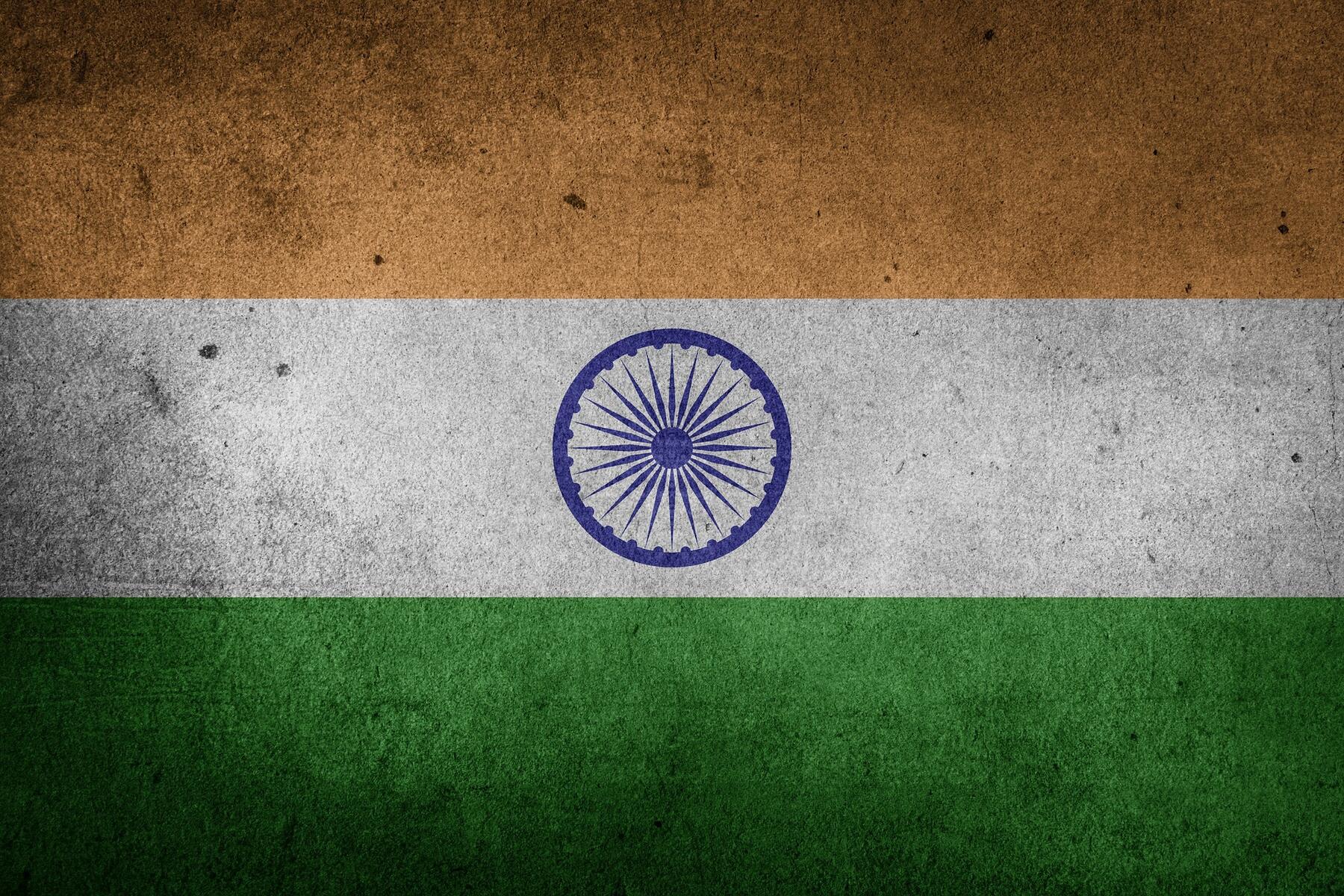The juggernaut of Indian democracy marches on as keenly contested elections are held in 5 states
01-12-2023
Voting for the elections in five Indian states – Rajasthan, Madhya Pradesh, Mizoram, Chhattisgarh, and Telangana – were held in the past few weeks between 7 November and 30 November. While exit polls yesterday suggested wins for the Bharatiya Janata Party (BJP) in two of these states, they predicted victory for the Congress Party in two others, and a hung Assembly in Mizoram. The final results, however, will only be known on 3 December when the votes are counted. Some analysts have opined that these elections, held just six-odd months before the nationwide general elections are due in 2024, will be an indicator of how the parties would fare then. However, the experience of 2018-2019, the last time when a similar sequence of elections was enacted, would suggest otherwise. While the Congress Party had at that time won three of the five state elections, the BJP, riding on the massive popularity of incumbent Prime Minister Narendra Modi, had swept aside the opposition and been re-elected with an overwhelming majority in the Lok Sabha (House of the People, the lower House of the Parliament) at the centre. Nevertheless, a win in these state elections can be expected to put a wind in the winning party’s sails for its Lok Sabha campaign next year.
The elections for the 200 Assembly seats in Rajasthan were held on November 23. Rajasthan, along with Madhya Pradesh and Chhattisgarh, was a battle of prestige for the BJP as well as the Congress since results in these states will provide an indication of the mood in the Hindi heartland before the Lok Sabha elections. In the 2018 state elections, the Congress Party had won 99 seats in Rajasthan, just one short of a majority, with 39.8% of the vote share. It formed the government with the support of the Bahujan Samaj Party (BSP) and independent Members of the Legislative Assembly (MLAs). With a marginally less 39.3% of the vote share, the BJP had managed to secure just 73 seats. Despite this loss in the state elections in 2018, the BJP had won all 25 Lok Sabha seats in Rajasthan in the Lok Sabha elections that were held a few months later in May 2019.
In a bid to reverse the trend of incumbent parties repeatedly being voted out in Rajasthan, the Chief Minister and Congress Party veteran Ashok Gehlot had laid out an array of populist welfare schemes. He launched the ambitious ‘Mehangai Rahat Camps’ (Inflation Relief Camps) across the state in April, distributing millions of guarantee cards, and offering benefits on food, gas, and electricity. The BJP, on the other hand, based its campaign on the issues of law and order and alleged corruption during Gehlot’s tenure. It also hoped to gain from anti-incumbency and factionalism in the Congress’ state unit. The debilitating factionalism within the Rajasthan Congress unit appeared to have been kept under check in recent months, but Congress leader Rahul Gandhi acknowledged the party’s challenges in the state when he said that his party was winning Madhya Pradesh and Chhattisgarh, probably winning Telangana, and was “very close” in Rajasthan. The exit polls have suggested that the BJP may wrest Rajasthan from the Congress. However, exit polls are not always accurate and have often got the verdict wrong in earlier elections, especially in states with diverse populations and communities.
In Madhya Pradesh, the largest state to go to the polls, the BJP has ruled for 18 of the last 20 years. Polling for the 230-seat Madhya Pradesh assembly took place on 17 November. At these elections, a majority of exit polls have predicted an intense battle between the BJP and the Congress, but two prominent surveys – IndiaToday-AxisMyIndia and Today’s Chanakya-News 24 – forecast a sweep for the BJP and a decimation for the Congress.
Despite the BJP’s strong hold on Madhya Pradesh, it went into the elections facing anti-incumbency as well as factionalism. A number of BJP leaders quit the party prior to the elections and joined the Congress. In the previous assembly elections in 2018, the Congress won 114 seats with a 41.5% vote share, while the BJP bagged a lower 109 despite a slightly larger 41.6% vote share. However, the Congress lost its thin majority in 2020 when its influential leader in the state, Jyotiraditya Scindia, quit along with MLAs loyal to him and joining the BJP. In the 2019 Lok Sabha elections, despite having lost the assembly elections just a few months prior, the BJP won 28 of the state’s 29 seats.
This time around, although the Congress was resurgent in Madhya Pradesh, it still carried deep-seated factionalism of its own, especially between veteran leaders Kamal Nath and Digvijaya Singh. The BJP, meanwhile, fielded several big guns in the state, including national General Secretary Kailash Vijayvargiya, long seen as an aspirant for the Chief Minister’s chair. It also made a strong push to get women votes, and the state cabinet recently took the decision to reserve 35% of the seats in government jobs for women. The party was also banking on the positive effects of a raft of welfare schemes of the Centre in the state.
Polling for the 90 assembly seats in Chhattisgarh took place in two phases on 7 & 17 November. In the 2018 state elections, the Congress had wrested Chhattisgarh from the BJP after 15 years of the party’s rule under its Chief Minister Raman Singh. The Congress had then won 67 seats, while the BJP could manage only 18. This time around, the BJP faced a formidable challenge in Chief Minister Bhupesh Baghel, whose government has launched numerous pro-poor welfare schemes with special focus on women, farmers and the tribal communities. The factionalism in the state Congress unit was also stemmed with the appointment of Baghel’s political rival, T.S. Singh Deo, as Deputy Chief Minister only months before the elections. The Congress projected a united face, instead of running a campaign focused only on Baghel.
The BJP, nevertheless, hoped to gain from corruption allegations against the Baghel government. It recently released a 104-page “chargesheet” against the Congress, alleging large-scale corruption, nepotism and scams under the Baghel government. Also, with its two ‘Parivartan Yatras’ (Marches for Change) in Chhattisgarh, the BJP used the twin strategy of ‘Ghar Wapsi’ (Return Home) of its disgruntled workers who have left the party, while also recruiting new workers. Despite these efforts, the exit polls have predicted a win for the Congress in Chhattisgarh.
In Telangana, the exit polls have suggested a remarkable Congress surge that will oust the ruling regional party, the Bharat Rashtra Samithi (BRS) of Chief Minister K. Chandrashekar Rao, who has served two tenures at the helm. The BJP is projected to come in 3rd. Polling for the 119-seat Telangana Assembly took place on 30 November. In the previous Assembly elections held in 2018, the BRS had won 88 seats, with a dominant vote share of 47.4%. The Congress had come in at a distant second, with 19 seats and a 28.7% vote share. The BJP had won just one seat, polling about 7% of the votes. However, the BJP, which had been confined to just a few Assembly constituencies in Telangana, scored big in racking up an impressive vote share in the Lok Sabha elections in 2019. In 17 Lok Sabha seats, the party secured 19.45% of the votes, up from barely 7% in the Assembly polls, and won a respectable four Lok Sabha seats.
Buoyed by these figures, the BJP campaigned aggressively for the elections held yesterday. Its campaign, based on allegations against K. Chandrashekar Rao’s daughter of playing a role in the Delhi liquor “scam”, aimed at garnering a significant number of seats to develop a foothold in another Southern state in an attempt to shed the image of it being a North Indian party, in addition to hoping to bolster its prospects for an even better performance in the next Lok Sabha elections.
The Congress, meanwhile, has been rejuvenated by its leader Rahul Gandhi’s ‘Bharat Jodo Yatra’ (Unite India March), and its hopes to encash the anti-incumbency factor against incumbent K. Chandrashekar Rao seem to have been realized, if the exit polls are indeed correct. To discredit the BRS as well as the BJP, the Congress had claimed that both these parties were secretly in an alliance. The BRS, meanwhile, had placed its hopes to retain power on the several innovative welfare schemes that K. Chandrashekar Rao had launched during his two terms in power.
Mizoram went to the polls on 7 November for its 40 Assembly seats. The state has a two-party politics, dominated by the ruling Mizo National Front (MNF) headed by Chief Minister Zoramthanga, and the Congress. MNF is allied with the BJP’s Northeast Democratic Alliance. It had won the elections in 2018, bagging 27 seats, while the Congress was able to win just five, and the BJP one. The Zoram People’s Movement (ZPM), whose candidates had contested independently in 2018 as the party was recognised only after the elections, had won six seats.
The MNF’s main plank at this year’s elections was Mizo nationalist sentiment. Despite being a BJP ally, it recently defied the Central government by refusing to conduct biometric identification of refugees arriving from neighbouring strife-torn Myanmar. These refugees have a close ethnic, cultural, and linguistic affinity with the Mizos. Zoramthanga had said that the Central government had instructed the Mizoram government to push back all the refugees from Myanmar, but he had flatly refused. Zoramthanga had also opposed the idea of a Uniform Civil Code (UCC) that had been promoted by the BJP. However, going into the elections, the MNF faced anti-incumbency as many believed that it had failed to deliver on the development front.
Meanwhile, the ZPM has gained popularity, especially in urban areas where it tried to build a narrative of change. Without going against the nationalist sentiment, the ZPM promised better overall development and presented itself as an ideal alternative to the two main parties. Some analysts have assessed that the ZPM had replaced the Congress as the main challenger of the MNF, and the retirement of the Congress’ veteran leader Lalthanhawla from state politics had helped the ZPM’s cause.
Several Indian analysts and publications have presented the elections in these five states as a barometer of what lies in store in the general elections in 2024, with some using terminology such as “semi finals”. However, as Pranab Dhal Samanta summed up in his opinion piece in The Economic Times, “while it’s a legitimate exercise for pollsters to extrapolate assembly electoral outcomes on the national canvas, trend lines from elections over the past decade or so have exposed the limitations of such assessments. The national election is no more considered just a sum of state polls. Instead, state polls provide the base on which parties can rebuild themselves”.
Whichever party is the winner in these state elections when the results are announced on 3 December, or even in the 2024 general elections that will be held across the vast length and breadth of India, the will of the Indian voter and the vibrancy of India’s electoral democracy will, in the final analysis, emerge as the ultimate victor.




